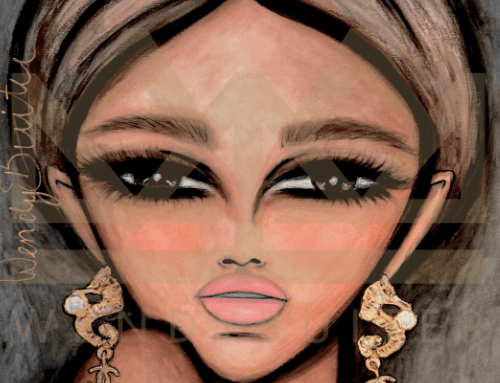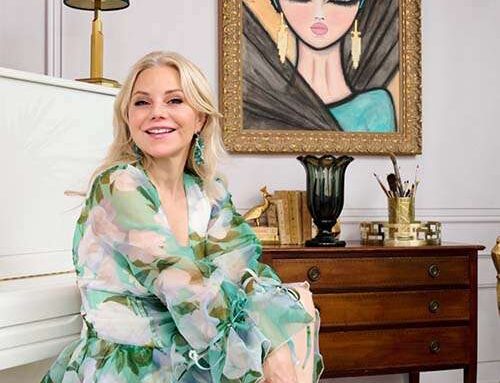How Does Lowbrow Art Become Highbrow? How Does That Happen?
This blog post delves into the fascinating process by which certain art forms transition from being perceived as lowbrow to highbrow, highlighting the dynamic nature of cultural appreciation and the transformative power of art.
Have you ever wondered how some things considered simple or lowbrow today might be revered as intellectual and elite in the future? It’s a fascinating journey that some art forms and cultural expressions undergo, shifting from being popular or even dismissed to becoming respected and highly valued. Let’s explore this phenomenon with some intriguing examples and try to understand how and why it happens.
Vincent van Gogh: From Ignored to Iconic
Vincent van Gogh is perhaps one of the most well-known examples of an artist whose work was not appreciated during his lifetime but later became highly esteemed. Van Gogh sold only a few paintings while he was alive and struggled with poverty and mental illness. His bold use of color, emotional depth, and innovative techniques were ahead of his time and not well understood by his contemporaries.
The Turning Point
The transformation of Van Gogh’s reputation began after his death in 1890, thanks to the efforts of a few key individuals:
– Theo van Gogh: Vincent’s brother, who supported him emotionally and financially, tirelessly promoted his work.
– Johanna van Gogh-Bonger: Theo’s wife, who played a crucial role in preserving Vincent’s legacy. After Theo’s death, Johanna dedicated herself to promoting Vincent’s work by organizing exhibitions and corresponding with art dealers and collectors.
– Art Dealers and Exhibitions: Early exhibitions in Paris and other major cities gradually introduced Van Gogh’s work to a broader audience. Influential art critics and collectors began to recognize his genius.
Over time, Van Gogh’s art gained recognition and acclaim, eventually becoming synonymous with the height of artistic achievement and creativity—transitioning from lowbrow to highbrow status.
Jazz: From Popular Music to High Art
Jazz music, which originated in African American communities in the early 20th century, was initially viewed as entertainment for the masses—a quintessential lowbrow art form. It was played in dance halls, clubs, and bars and was associated with a lively, informal atmosphere. However, as jazz evolved, its complexity and artistic merit began to be appreciated by a broader audience.
The Evolution
– Musical Innovation:
Jazz musicians continually pushed the boundaries of the genre, incorporating elements of blues, ragtime, and classical music. Figures like Duke Ellington, Louis Armstrong, and later John Coltrane and Miles Davis, showcased the depth and versatility of jazz.
– Cultural Shifts:
The cultural context of jazz changed, especially during the civil rights movement, when it became a symbol of African American pride and cultural expression.
– Academic Recognition
Jazz was increasingly studied in academic settings and included in music curricula. Prestigious institutions began offering courses and degrees in jazz performance and history.
– Critical Acclaim:
Jazz gained respect from music critics and was featured in esteemed venues like Carnegie Hall.
Today, jazz is celebrated as a sophisticated and intellectually rich art form, illustrating its rise from lowbrow to highbrow.
Other Examples
Comic Books and Graphic Novels
Originally seen as simple entertainment for children, comic books have undergone a significant transformation. The emergence of graphic novels, with their complex narratives and mature themes, has elevated the medium’s status from lowbrow to highbrow.
– “Maus” by Art Spiegelman: This Pulitzer Prize-winning graphic novel tells the harrowing story of the Holocaust, showcasing the profound storytelling potential of the medium.
– Critical and Academic Interest: Comics and graphic novels are now studied in universities and recognized for their artistic and literary value.
Street Art
Street art, including graffiti, was once viewed as vandalism or a subversive act—a clear example of lowbrow art. However, it has gained legitimacy and respect as a form of contemporary high art.
– Banksy: This anonymous artist’s provocative and politically charged works have garnered international attention and acclaim.
– Museum and Gallery Exhibitions: Street art has been featured in major museums and galleries, further legitimizing its status as a significant art form.
The Process of Cultural Transformation
How does this shift from lowbrow to highbrow occur? Several factors play a role:
1. Innovation and Quality: Art forms that introduce new techniques, perspectives, or high levels of craftsmanship can attract critical attention and appreciation over time.
2. Cultural and Social Context: Changes in societal values and cultural context can elevate the status of certain art forms. For example, movements for social justice have highlighted the importance of diverse cultural expressions.
3. Advocacy and Promotion: Champions of an art form, such as critics, academics, collectors, and influential figures, can play a significant role in changing perceptions.
4. Academic and Institutional Support: When academic institutions begin to study and teach an art form, it gains legitimacy and respect.
5. Market Dynamics: The art market, including galleries, auctions, and collectors, can influence the perceived value of an art form.
Conclusion
The journey from lowbrow to highbrow is complex and multifaceted, involving shifts in cultural perception, advocacy, innovation, and academic recognition. Whether it’s the bold strokes of Van Gogh, the soulful rhythms of jazz, the narrative depth of graphic novels, or the subversive power of street art, these transformations remind us that art is dynamic and ever-evolving. What is considered lowbrow today might be celebrated as highbrow tomorrow, reflecting the ongoing dialogue between art and society.
So, keep an open mind and explore the diverse world of art. You never know which “mainstream” piece hanging on your wall today might be the next celebrated masterpiece.
Love,
Wendy








Leave A Comment
You must be logged in to post a comment.